5 Eye-Catching Ways to Use Rich Notification Messaging
Published on May 05, 2017/Last edited on May 05, 2017/5 min read

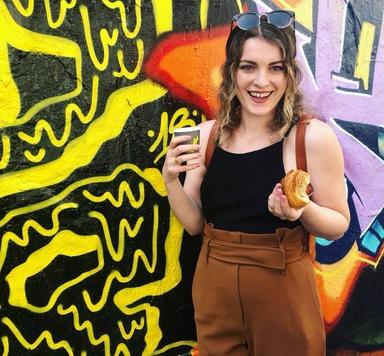
Kelsey Cottingham
Editor, Content Marketing at BrazeDear reader: This blog post made its original debut in Appboy’s Relate Magazine. Pocket its pearls of wisdom, and then for more information, check out our new Cross-Channel Engagement Difference Report!
Push notifications can be more than a few words of copy and the occasional emoji. It’s now possible for brands to add images, GIFs, videos, and even app-like functionality within a notification.
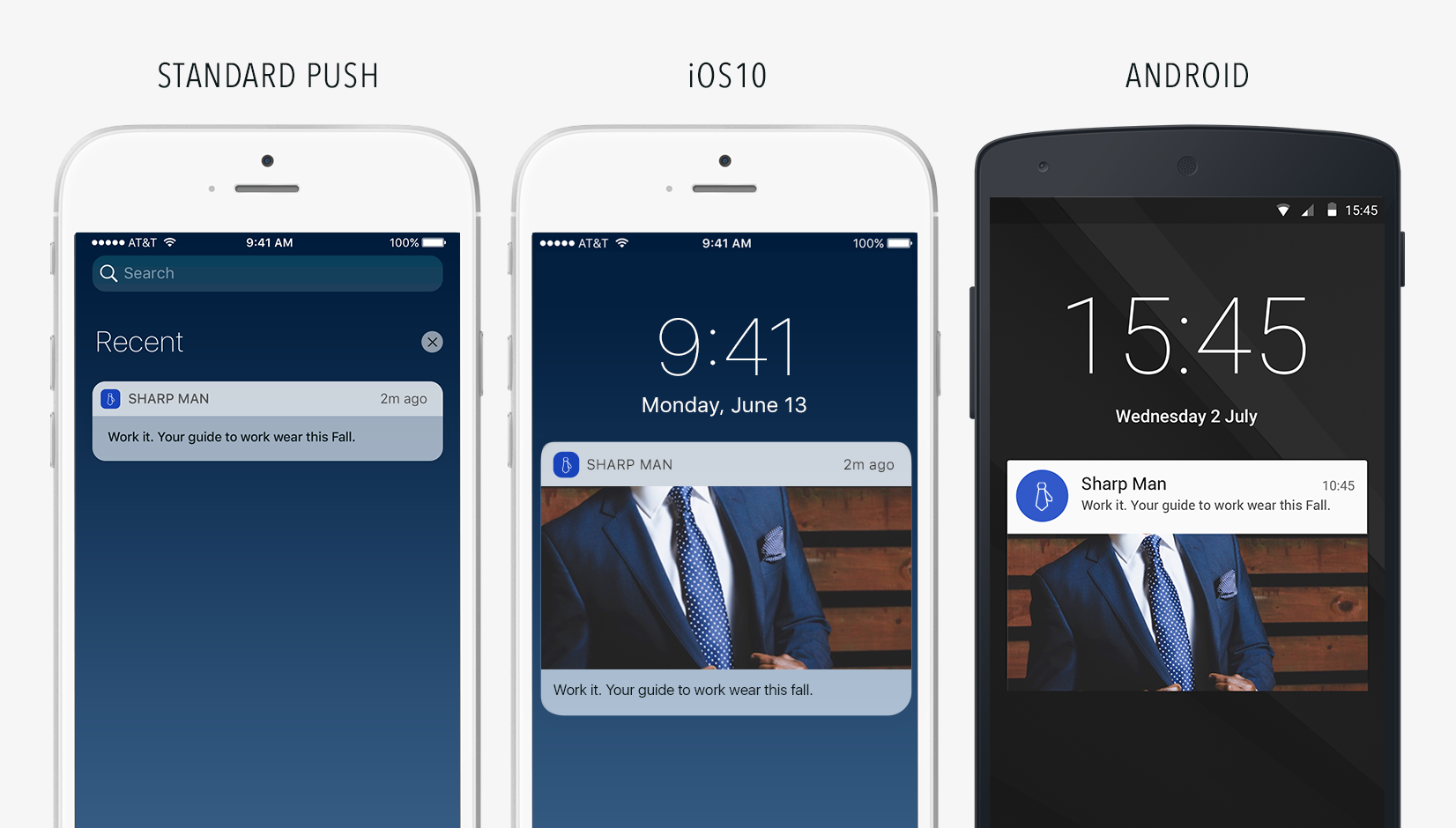
Android has supported images in notifications for a while, but the release of iOS 10 last fall opened up this new functionality for iPhones. By adding visual elements to push, messages can engage users in new ways and trigger emotional responses that text alone cannot create. They also provide another avenue to build your brand visually and reinforce relationships with users. But while rich notifications can help your outreach stand out against other brands’ messages, it’s still important to be thoughtful and strategic about how you use this tool.
Push notifications have always been a great channel for brands looking to send timely notices that encourage recipients to take action. But the rise of rich notifications have made it possible to provide users with a compelling, visual experience beyond the app, changing the game for this important messaging channel.
That being said, it’s important to remember that rich push notifications are still push notifications, and the risks and benefits that come with sending push still apply. People respond to push when it’s seen as relevant and timely—not so much if you’re off the mark on timing or content.
You still need people to opt in to receive push notifications, rich or not, so you should prime for push—but it’s just as important to provide a useful, positive messaging experience once your customers opt in. Customers are already prone to disabling push if they get too many (or irrelevant) messages, and the vivid experiences that rich push makes possible could exacerbate that issue by making poorly-timed or thoughtless push notifications more memorable.
If your push notification game is solid, however, the addition of rich content to your push repertoire should only improve your results. Not sure where to start? Learn from five leading brands that are already making effective use of rich notifications:
1. HelloFresh: Onboarding offers
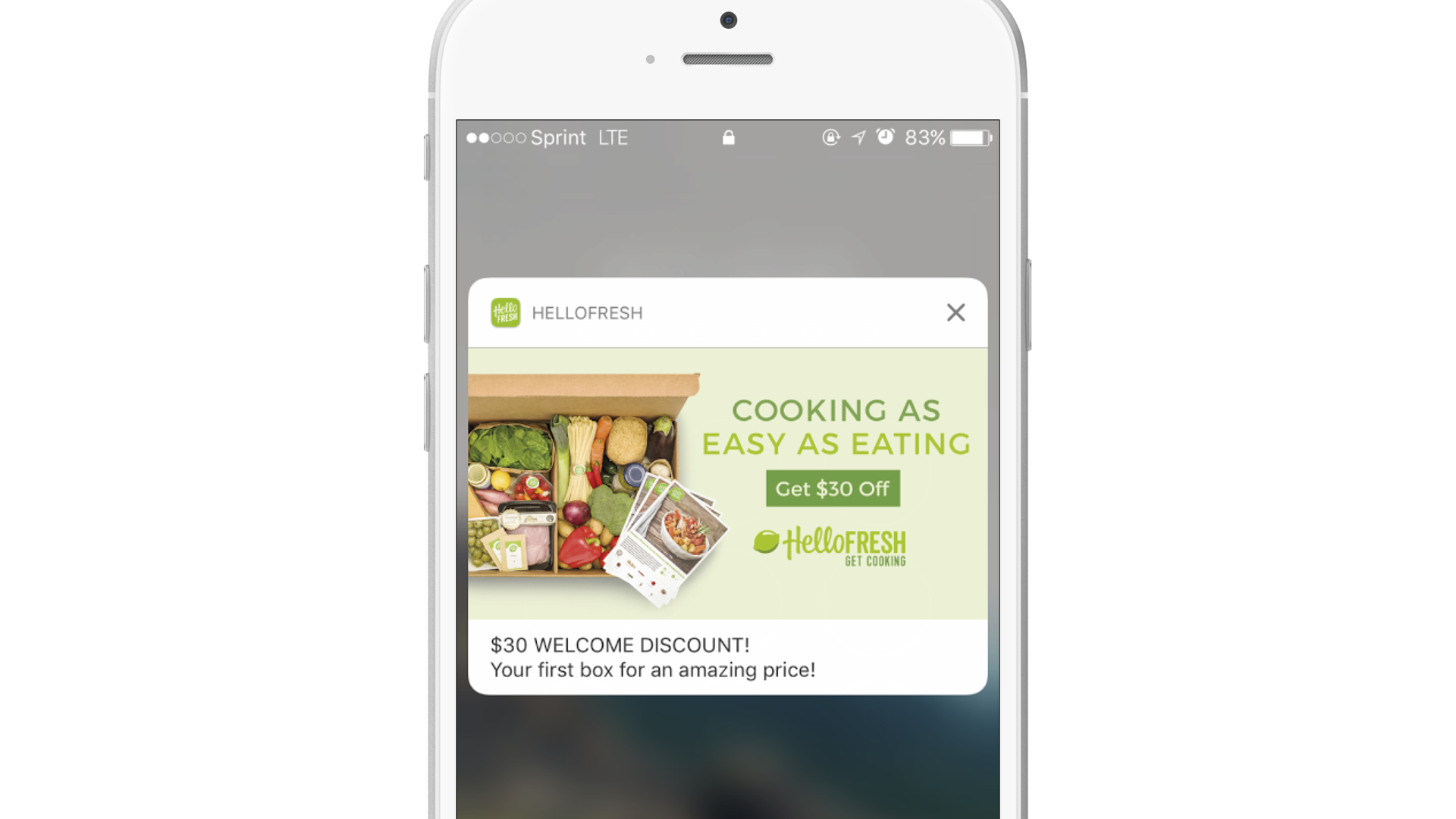
When you’re onboarding a new customer, clearly conveying the value that they can see from your brand is a key part of retaining them over the long haul. HelloFresh uses rich notifications to help users visualize the beautiful box of ingredients they’ll receive when they make their first order. You could use a similar approach to show off any visually appealing aspects of your app that you want to highlight for new users.
2. Souq: Sale spotting
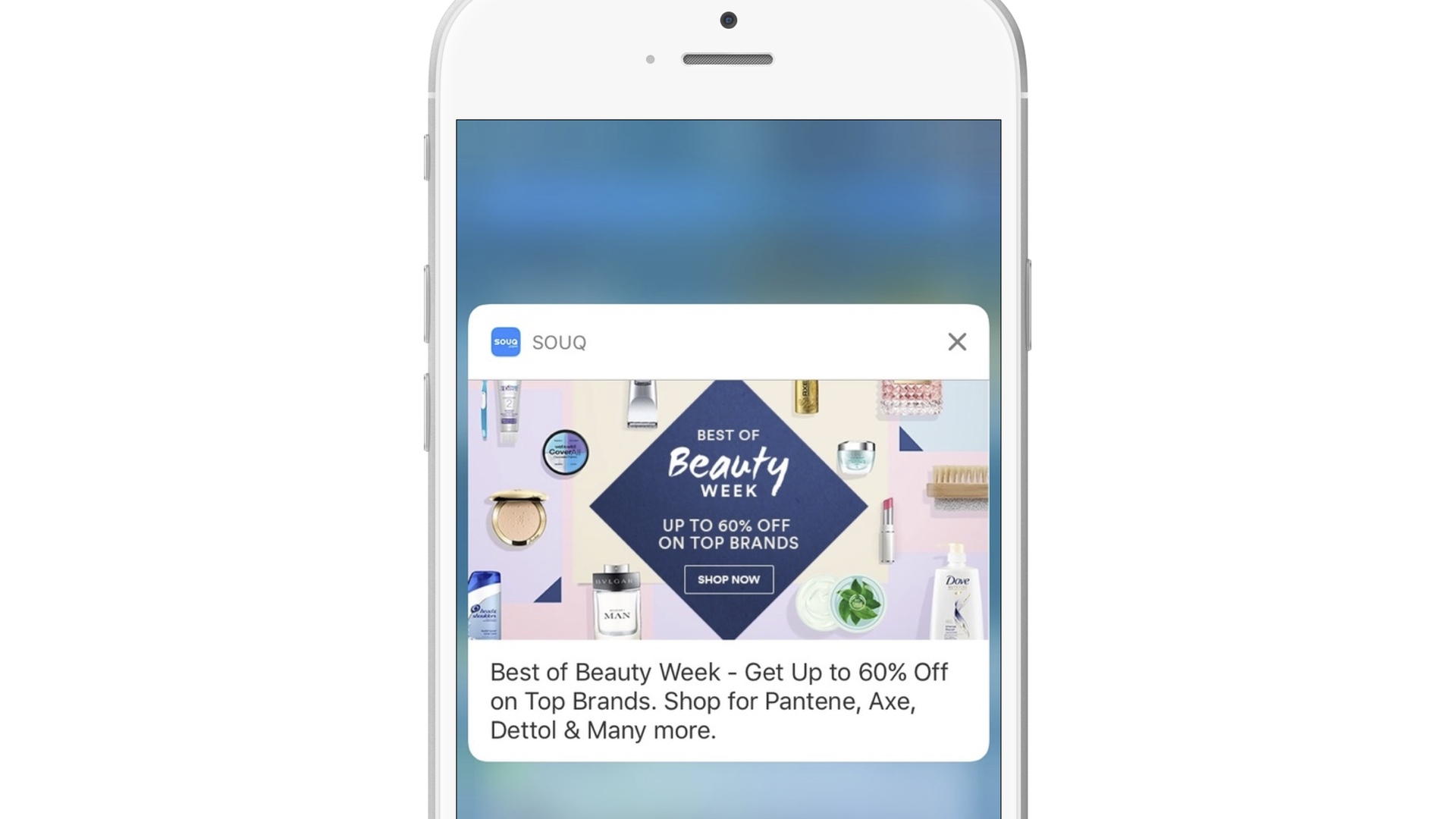
Since push is ideal for calling attention to timely offers, Souq used a rich notification to highlight discounts during Best of Beauty Week. The message is still short and to the point—but the image helps users envision the breadth of products available as part of the promotion. It also makes it more likely that recipients will quickly spot a brand or product they want to try or need to restock, bolstering the appeal of the campaign.
3. TodayTix: Timely tickets
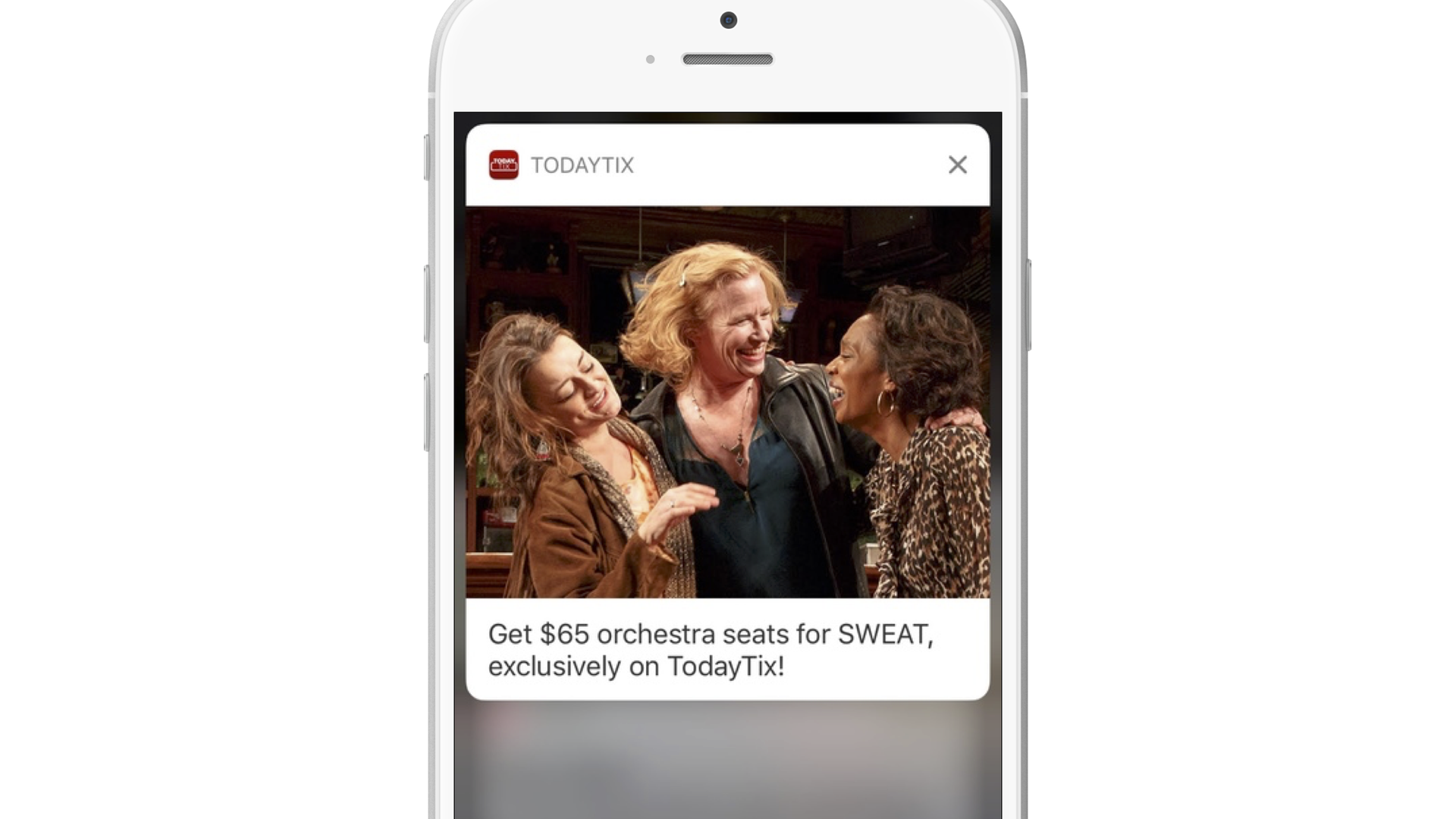
TodayTix focuses on providing users with local, last-minute ticket offers, and push is a perfect channel for that purpose. By taking advantage of rich push notifications, TodayTix is able to include images from current plays in their messaging, helping users imagine themselves attending the performance in vivid detail, increasing the appeal of this kind of promotional outreach.
4. EPIX: Programming promotions
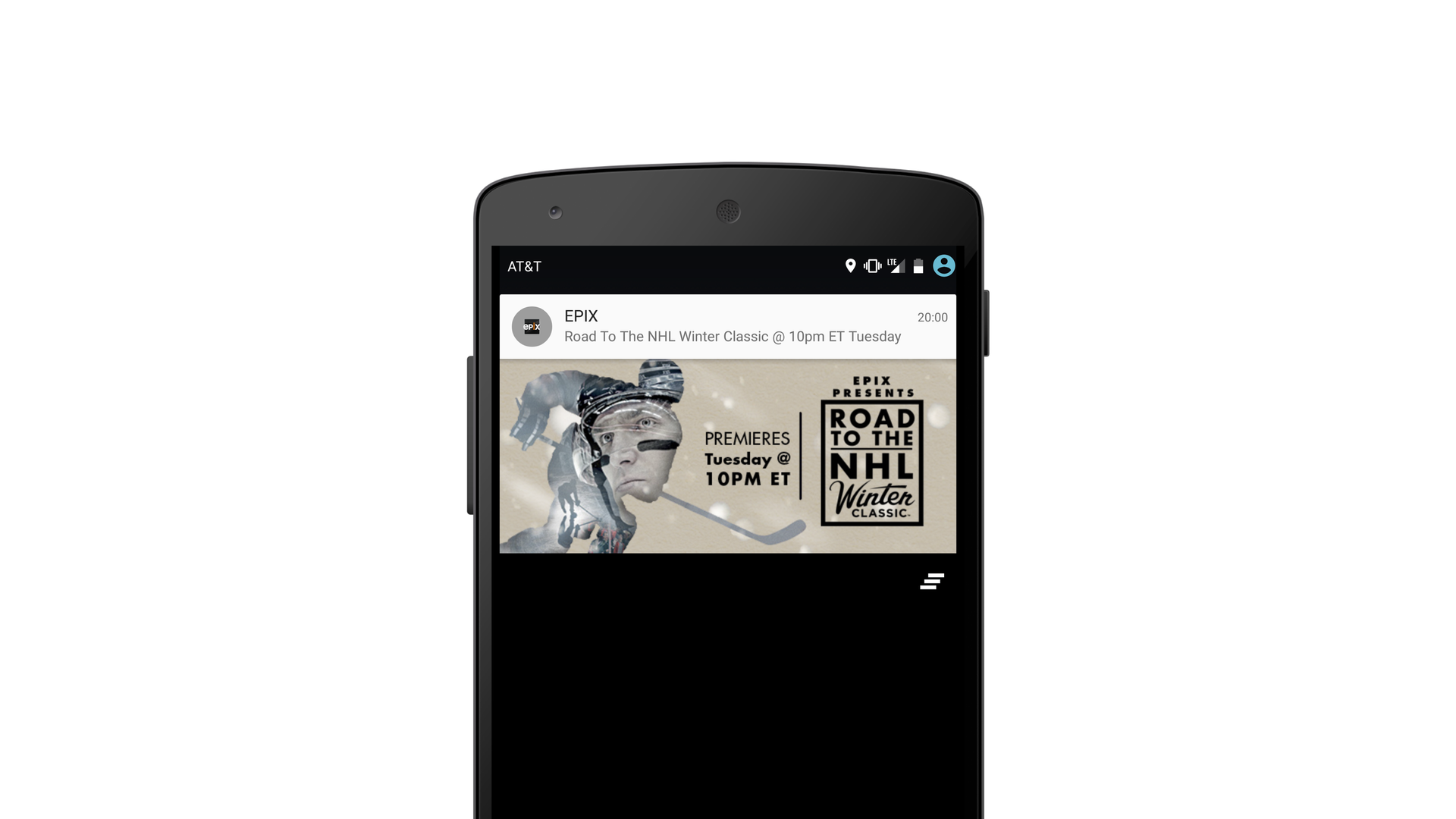
Rich notifications are also ideal for apps that rely on visual content. EPIX‘s premium video streaming app uses push to alert users to key events or special programming. During their “Road to NHL” promotion, they added eye-catching images to their push notifications and scheduled the send-time so that messages would hit when the video would became available in each time zone. By giving recipients a clear, engaging picture of content that was premiering, EPIX increased app sessions per hour by 800% day over day.
5. Uber: Transportation tracking
While brands using rich notifications have generally focused on leveraging the ability to add rich images to their push, there are some other exciting possibilities out there— and Uber is one of the brands exploring them.
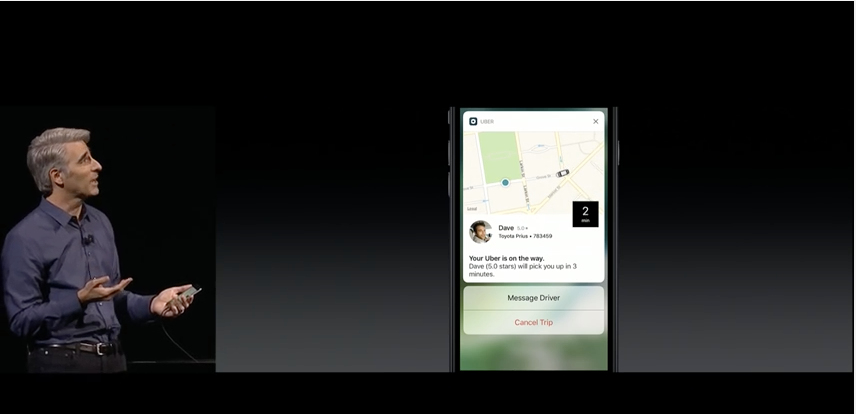
Apple’s Craig Federighi demonstrating iOS 10’s support for live ride-hailing tracking within a push notification
Using iOS 10’s rich notification support, Uber makes it possible for users to track the arrival of their ride within a rich notification, mixing marketing and product experiences in a seamless, highly-valuable way. Because Uber riders often rely on the service on the fly, this notification functionality has the potential to make the ride hailing experience less involved and more pleasant.
What’s Next?
This may well be just the tip of the iceberg when it comes to new functionalities for push. Google recently announced push notification channels, for instance, which could lead to more personalized experiences for users, but could also result in more work for marketers tasked with developing additional layers of push content. The future of push notifications is still unwritten—for the moment, anyway.
Being strategic about your approach to push, ensuring relevance through segmentation and testing, and keeping a close eye on your opt-outs will help you find the best ways to reach out to your unique customer base. But don’t stop there: taking full advantage of rich notifications can do a lot to make your users’ lives a little easier and help build your relationship with them—even when they’re not using your app.
Related Tags
Releated Content
View the Blog
Are you AI-savvy enough to survive? A wake-up call for CMOs

Team Braze
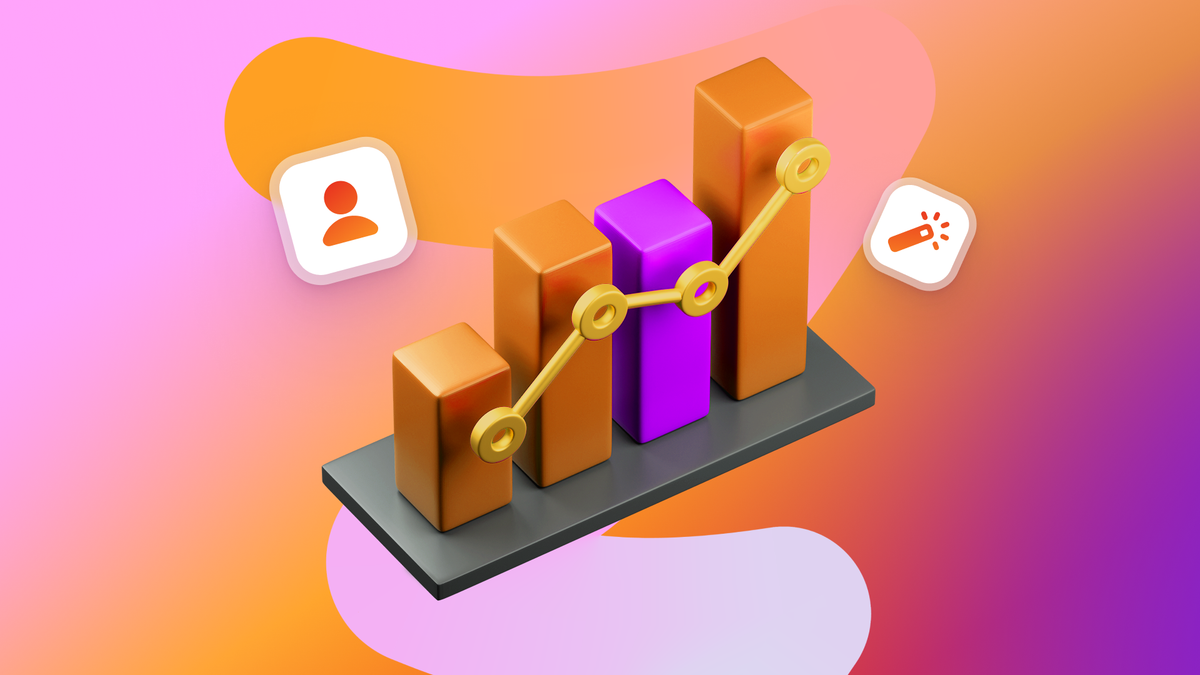
What are contextual bandits? The AI behind smarter, real-time personalization

Team Braze

What is a multi-armed bandit? Smarter experimentation for real-time marketing
